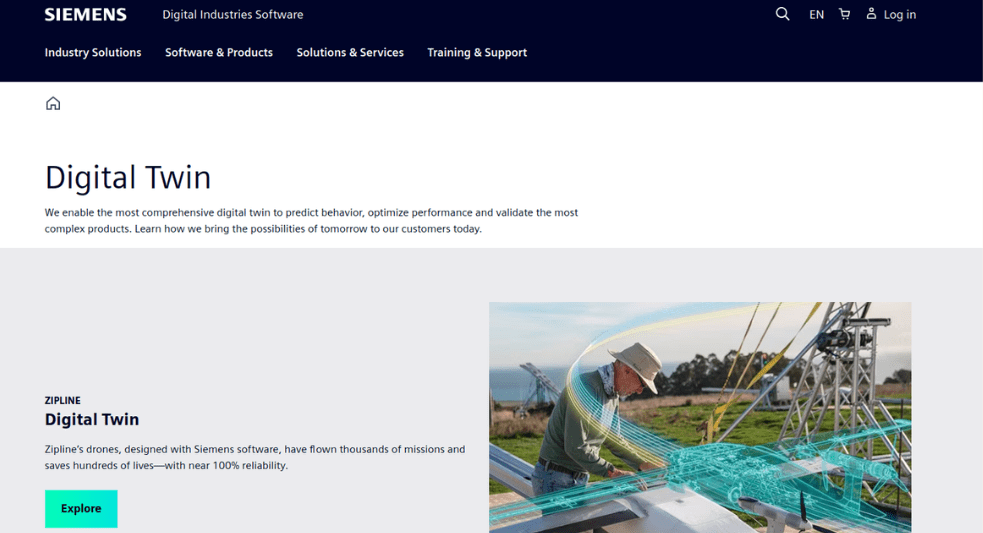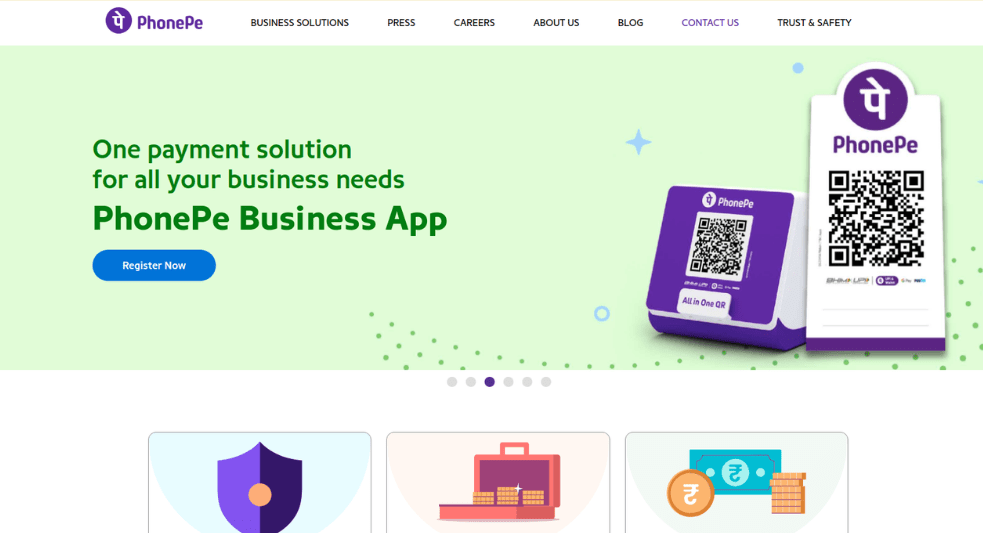Generative AI, a branch of artificial intelligence that involves machines generating content autonomously, has pushed the boundaries of novelty and experimentation.
As we enter 2024, the possibilities in the Generative AI arena are expanding exponentially, with big companies leading the charge in utilizing its full potential and shaping the future of various industries.

As per a report by IBM, AI is currently being utilized by 34% of companies, with an additional 42% actively exploring its potential applications. These figures highlight that AI is widely acknowledged for driving innovation and efficiency in many industries. Generative AI, at the forefront of this technological wave, goes beyond traditional AI by creating new content, ideas, and solutions.
Whether you’re a budding entrepreneur, a seasoned professional, or simply an individual curious about cutting-edge technology, we will equip you with the knowledge and resources needed to embark on your generative AI journey with expert insight and services.
Generative AI Use Cases
The emergence of generative AI has sparked considerable interest across diverse sectors, prompting rapid integration into the workflows. According to IBM’s findings, 54% of organizations are experiencing cost savings and increased efficiencies by incorporating AI into their IT, business, or network processes.
- Code Generation: Generative AI automates code writing, bug fixing, and testing, boosting efficiency in complex coding tasks and speeding up documentation creation in software development.
- Product Development: Designers embrace generative AI to optimize large-scale design processes, ensuring cost-effective and durable products. Its versatility spans the entire product development cycle, providing insights into user feedback for continuous improvement.
- Graphic Design and Video: Generative AI streamlines video creation by generating realistic images and animations without requiring actors or extensive editing. Organizations experiment with AI-generated videos and enhance personal photos for professional use.
- Sales and Marketing: With hyper-personalized communication and streamlined content creation, Generative AI transforms marketing. In sales, it offers deep analytics for customer behavior, enhancing data analysis, audience targeting, and lead identification.
- Project Management and Operations: The Generative AI tools aid project managers by automating tasks, leveraging historical data for accurate forecasting, and simplifying document searches, enabling a shift to higher-level strategic focus.
- Business and Employee Management: Generative AI enhances customer service efficiency and structures employee-manager interactions, providing transparent frameworks for feedback and professional growth.
- Customer Support and Service: The Generative AI-powered chatbots reshape customer support with natural conversations and 24/7 inquiry handling, blurring the lines between virtual and human assistance.
- Fraud Detection and Risk Management: Gen AI swiftly scans large datasets, identifying patterns for underwriters and claims adjusters to optimize client outcomes. It generates custom reports, simplifying decision-making while acknowledging the role of human judgment.
- Generating Synthetic Data for Training and Testing: Enterprises leverage generative AI to create synthetic data, accelerating AI model training, testing, and solution development without relying on sensitive real-world data.
Generative AI in Action
Generative Artificial Intelligence is a groundbreaking subset of AI that has captivated the attention of big corporations across industries, revolutionizing the way they operate and innovate.
Here are the companies we will be focusing on:
- L’Oréal
- Siemens
- JPMorgan Chase & Co
- TikTok
- Amazon
- Shopify
- PhonePe
- Adobe
Innovative Strategies Of Big Companies
Moving forward, we will explore how these companies are using the capabilities of Gen AI to drive growth, enhance productivity, and stay ahead of the curve.
L’Oréal
TrendSpotter has been recognized for its efficiency in social listening, with feedback indicating unprecedented efficacy in capturing real-time beauty trends.
- Project Origin: Developed by L’Oréal, TrendSpotter is a project accelerated within the Beauty Tech Accelerator, aiming to detect and predict beauty trends accurately within a 6 to 18 months time horizon.
- Objective: The primary goal is to identify trends early on, covering aspects from ingredients and textures to packaging and lifestyle. TrendSpotter focuses on detecting rising beauty trends across skincare, haircare, and makeup categories.
- AI Trend Detection Engine: The tool utilizes an AI Trend Detection Engine that reads and analyzes contributions from trendsetters online, including beauty influencers, celebrities, beauty professionals, and scientific experts. The engine is trained to capture beauty-related posts, spot keywords, and identify emerging trends that could influence future beauty consumer preferences.
- Data Sources: TrendSpotter scans 3,500 online sources, including social networks, cosmetic-focused online publications, blogs, and videos, to gather insights into new and trending topics. This vast array of data is publicly available, ensuring compliance with privacy regulations, as it consists of voluntarily shared information online.
- Data Processing: The tool’s algorithms process approximately 25 million bits of data yearly, focusing on text, hashtags, and information embedded in online images and videos. Social listening platforms, powered by artificial intelligence and machine learning, distill patterns from this extensive data.
- Global Focus: The initial focus was on six countries—the United States, the United Kingdom, France, South Korea, Japan, and Brazil—where cosmetics trends often emerge. The system may expand its geographical scope in the future.
- User Access: Currently, 1,800 employees of L’Oréal’s global workforce can access insights from TrendSpotter. It serves as a valuable resource for digital, marketing, and consumer intelligence teams to leverage consumer voices in their strategies.
L’Oréal envisions TrendSpotter as a step towards becoming not just a cosmetics brand but a “beauty tech company.”
Siemens

Digital Twins enables companies to continuously optimize their products, production, and performance at minimal cost.
-
- Digital Twin Overview: A digital twin is a virtual representation of a physical product or process utilized for understanding and predicting the performance characteristics of its real-world counterpart.
- Key Capabilities: This incorporates multi-physics simulation, data analytics, and machine learning for simulating, predicting, and optimizing product and production systems throughout their lifecycle. It demonstrates the impact of design changes, usage scenarios, and environmental conditions, eliminating the need for physical prototypes, reducing development time, and enhancing final product quality.
- Continuous Evolution: With data from sensors on physical objects, a digital twin determines real-time performance, operating conditions, and changes over time. It also enables a continuous update of the digital twin to reflect changes in the physical counterpart, creating a closed-loop feedback system for ongoing optimization.
- Types of Digital Twins:
Product Digital Twins design new products by virtually validating product performance and analyzing real-world behavior. The need for multiple prototypes is eliminated, thus, reducing development time and improving final product quality. Production Digital Twins validates manufacturing processes before production, creating an efficient methodology under various conditions and optimizes production by creating digital twins of manufacturing equipment, preventing downtime, and predicting maintenance needs.
Performance Digital Twins captures, analyzes, and acts on smart product and plant operational data. These provide actionable insights for informed decision-making, creating new business opportunities, and improving product and production system efficiency.
- Digital Thread: It is the integration and evolution of the three digital twins (Product, Production, and Performance) are collectively known as the digital thread. Digital Twins helps companies make informed decisions, make faster iterations based on customer feedback, and efficiently navigate complexity in design and manufacturing.
JPMorgan Chase & Co

JPMorgan Chase & Co. introduced IndexGPT, an AI tool revolutionizing personalized investment advice for Latin American retail clients. This innovative service employs cloud-based software and AI to analyze and tailor financial asset recommendations to individual client needs.
- Technology Overview: IndexGPT leverages the capabilities of artificial intelligence on a cloud-based platform, mirroring the renowned GPT (Generative Pre-trained Transformer) model. It employs multi-physics simulation, data analytics, and machine learning to efficiently analyze design changes, usage scenarios, and environmental conditions, optimizing the investment decision-making process.
- Democratizing Financial Tools: JPMorgan Chase & Co aims to democratize access to sophisticated investment tools through IndexGPT, specifically targeting retail clients in Latin America. This pioneering tool is expected to transform the way financial decisions are made, optimizing outcomes for individual investors in the region.
- Strategic AI Applications: JPMorgan Chase & Co strategically embraces AI with initiatives such as decoding Federal Reserve messages and AI-generated ad copy. The development of IndexGPT confirms concrete plans for a product launch, highlighting JPMorgan’s strategic use of AI in finance.
- How IndexGPT Works: IndexGPT simplifies financial investment by utilizing artificial intelligence for securities investing. Customers gain insights into various investment products, enabling them to make informed decisions based on their financial health. The AI software guides customers through the decision-making process.
- Financial Advisors’ Landscape: The rise of technology has raised concerns among financial advisors, but firms offering robo-advisor services have not displaced human advisors. The company’s IndexGPT could be a first-of-its-kind AI tool directly offered to customers, potentially reshaping the landscape of financial advisory services.
The potential launch of IndexGPT highlights the bank’s commitment to embracing cutting-edge technologies for the benefit of its clients and the financial industry at large.
TikTok

TikTok, one of the world’s most popular social media platforms, TikTok is venturing into AI chatbots with “Tako,” currently in limited testing on the platform’s interface, aiming to redefine user interaction.
- Tako’s Role and Applications: Tako serves as an AI-powered assistant, aiding users in learning how to use TikTok effectively, offering tips on content creation, and recommending popular videos. Its machine-learning capabilities analyze user activity to provide personalized content recommendations, contributing to a more engaging TikTok experience.
- How Tako Works: Powered by artificial intelligence, Tako understands and responds to user questions by leveraging a vast dataset of text and code. Tako’s development is ongoing, but its current capabilities showcase its potential to assist users in various aspects of TikTok usage.
- Features and Functionality: Tako, positioned above user profiles and interaction buttons, enables users to ask questions using natural language or seek video recommendations. Users can request suggestions for specific topics, and Tako responds with a list of results, including video details and links, enhancing the user experience with a conversational interface for TikTok content discovery and interaction.
- Underlying Technology: TikTok has customized an external AI provider for Tako, leveraging third-party AI technologies tailored to the platform’s needs. The underlying AI model for Tako is not disclosed, highlighting TikTok’s reliance on external expertise in the AI domain.
- Privacy Considerations: Tako conversations are logged for safety purposes and to enhance the user experience, a common practice in modern AI chatbots. Users can delete their chats manually, addressing privacy concerns associated with long-term data retention.
- Potential Impact on TikTok: If Tako proves successful in testing and receives a broader release, it could significantly alter search and navigation within the TikTok app. The chatbot’s potential to answer a wide range of queries and recommend videos based on user preferences may reshape the user experience on TikTok.
As Tako evolves, it has the potential to revolutionize interactions on social media platforms, providing users with a more personalized and informative experience. The continuous development of Tako may unveil new applications and features, contributing to the evolution of social media experiences.
Amazon
 Customer reviews have been a cornerstone of Amazon’s success, providing users with valuable insights into products and influencing purchase decisions. The company is now utilizing Generative AI to address the challenge of summarizing common themes across reviews, introducing AI-generated review highlights.
Customer reviews have been a cornerstone of Amazon’s success, providing users with valuable insights into products and influencing purchase decisions. The company is now utilizing Generative AI to address the challenge of summarizing common themes across reviews, introducing AI-generated review highlights.
- Features and Rollout: Available to a subset of U.S. mobile shoppers, this feature presents a concise paragraph on the product detail page, capturing frequently mentioned product features and customer sentiments. AI-generated review highlights cover a diverse range of products. Users can now quickly grasp product attributes and sentiments, streamlining the decision-making process.
- How It Works: The AI models analyze vast amounts of customer reviews to distill key product features and sentiments into succinct highlights. These highlights provide customers with a snapshot of the product’s strengths and the sentiments expressed by other buyers.
- User Interaction and Expansion: Mobile shoppers can tap on specific product attributes under review highlights to surface reviews related to those attributes, enhancing user interaction. Amazon is actively testing and refining the AI models, with potential plans to expand the feature to additional categories and customers based on feedback.
- Ensuring Authenticity: Amazon places a strong emphasis on authenticity, implementing Community Guidelines and employing machine learning models to detect and prevent fake reviews. The AI-generated review highlights draw exclusively from Amazon’s trusted review corpus, ensuring reliability and authenticity.
- Global Efforts Against Fake Reviews: The company invests substantial resources in combating fake reviews, utilizing advanced fraud-detection tools and expert investigators to maintain the integrity of customer feedback. The company’s commitment to authentic reviews contributes to a richer and more trustworthy review ecosystem.
Amazon’s introduction of AI-generated review highlights marks another milestone in the evolution of customer reviews, aiming to empower users with quick insights and facilitate confident purchase decisions in an ever-expanding marketplace.
Shopify
 Shopify Magic, the latest innovation in e-commerce, represents Shopify’s first foray into generative AI. Available to all Shopify plan users, Magic’s AI features leverage Large Language Models (LLMs) to create diverse content for e-commerce stores.
Shopify Magic, the latest innovation in e-commerce, represents Shopify’s first foray into generative AI. Available to all Shopify plan users, Magic’s AI features leverage Large Language Models (LLMs) to create diverse content for e-commerce stores.
- Capabilities: Shopify Magic utilizes LLMs to process and understand human language, facilitating the generation of various types of copy on e-commerce platforms. Merchants can use Magic’s AI prompts to expand on existing copy, summarize text, create new content, translate into different languages, respond to customer queries, and provide instant answers to FAQs.
- How to Use Shopify Magic: With this feature, users can create unique product descriptions, enter information directly, and generate descriptions based on the provided details. Shopify Magic is versatile, aiding in writing blog posts, drafting emails, and assisting in various content creation tasks, optimizing workflow.
- Foundation Models: Shopify’s suite of AI tools employs a mix of foundation models, including GPT (Generative Pre-trained Transformer) and Llama 2. These models are chosen based on their suitability for specific features, enhancing the effectiveness of the AI-powered tools.
- AI Editor Features: Other AI tools include automated product descriptions, chatbot integration, and suggested replies for merchant-buyer chats. Designed to meet the needs of independent sellers and D2C businesses on Shopify, enhancing their product presentation and customer interactions.
- Semantic Search Powered by AI: Shopify’s semantic search transcends traditional Boolean searches, understanding conversational queries to provide more relevant results. A departure from keyword matching, the semantic search reads the intention behind the query for a more user-friendly experience.
- Media Editor Addition: Shopify Magic introduces a media editor with generative image fill, enabling merchants to change photo backgrounds without Photoshop experience. The image editor suggests backgrounds and styles matching existing product images, catering to smaller sellers without access to professional studios.
- Shopify Sidekick AI Integration: Sidekick AI, powered by Magic, serves as a personal assistant for Shopify users. Sidekick assists in tasks such as querying product sales, generating content ideas, and handling repetitive tasks like creating discount codes.
Shopify Magic’s integration of generative AI marks a significant advancement in e-commerce, empowering merchants to streamline content creation, enhance product presentation, and provide a more personalized user experience.
PhonePe
 PhonePe addresses financial transaction anxiety by serving a broad customer base with diverse income levels and transaction types. It aims to automate customer service inquiries to improve efficiency and overcome agent training challenges.
PhonePe addresses financial transaction anxiety by serving a broad customer base with diverse income levels and transaction types. It aims to automate customer service inquiries to improve efficiency and overcome agent training challenges.
- Chatbots and Automation: PhonePe utilizes chatbots to automate service inquiries, achieving an 80% resolution rate without human involvement. Also, integrated ERP systems with Freddy bot for seamless automation of 850 decision items, resulting in improved Customer Satisfaction (CSAT) scores compared to traditional channels.
- Freddy Agent-Assist Bot: Addressing the challenge of training agents on a myriad of services, PhonePe implemented a Freddy agent-assist bot. It assists agents with customer context, guides workflows, and suggests next best actions, optimizing customer interactions.
- Machine Learning (ML) Integration: The tool integrated ML flow, Spark, and Apache for product enhancement. ML solutions are employed for bill payments, providing reminders, cost-saving tips, and beneficial spending recommendations. Ongoing refinement of ML and Risk-in-line system for enhanced risk and fraud detection, adapting to transaction patterns.
- Improved Customer Experience: PhonePe forged partnerships with e-wallets (Airtel Money, JioMoney, Freecharge) for seamless linking. Integrated popular apps (RedBus, Myntra, Ola, GoIbibo) via PhonePe Switch, offering a unified account. Introduced innovations like a Bluetooth-enabled POS device, a message feature on the money page, and the PhonePe ATM for instant cash dispensing at general stores.
- Data-Driven Decision Making: The company emphasizes data-driven decision-making, with a focus on personalized user experiences through CRM and analytics. The analytics and data science teams play a pivotal role in risk and fraud detection, promotions platforms, and CRM, ensuring users have a personalized and streamlined experience.
PhonePe’s commitment to unlocking value through core capabilities, combined with AI, ML, and other emerging technologies, positions it as the go-to app for merchants across India. The platform’s continuous exploration of new-age technologies reflects its dedication to providing innovative and convenient features to users.
Adobe
 Adobe Firefly is a standalone web app that integrates generative AI with Adobe Creative Suite. Using simple text prompts enhances creative workflows, allowing users to bring their ideas to life effortlessly. Leveraging Adobe’s significant presence in the design industry, with over 90% of creative professionals using Adobe Photoshop.
Adobe Firefly is a standalone web app that integrates generative AI with Adobe Creative Suite. Using simple text prompts enhances creative workflows, allowing users to bring their ideas to life effortlessly. Leveraging Adobe’s significant presence in the design industry, with over 90% of creative professionals using Adobe Photoshop.
- Integration and Accessibility: Firefly was integrated into Adobe Photoshop, Illustrator, and Adobe Express, with plans to extend to Premiere Pro and InDesign. Ensures accessibility to both professional designers and casual users, offering features like generative recolour, text effects, and sketch to image.
- Massive Industry Foothold: Firefly is an extension of Adobe’s longstanding commitment to empowering individuals to realize their creative visions. In the initial seven months post-launch, Firefly saw users generating over three billion images, showcasing its rapid adoption.
- Text-to-Image Capability: Adobe Firefly excelled in text-to-image functionality with an upgraded Image 2 model, surpassing earlier issues seen in the first version. It boasts an efficient user interface, providing a “wall of inspiration” and allowing users to tweak prompts and settings for desired outputs.
- Generative Fill Feature: The tool is available in both the web version and Adobe Photoshop. Generative fill allows users to replace unwanted elements in an image creatively. Users can highlight broad areas for creative liberty, although it currently faces challenges with generating certain objects realistically.
- Text Effects and Generative Recolor: The text effects cater to designers, enabling the transformation of text into visually stunning artwork using prompts. Generative recolour, tailored for designers, facilitates quick experimentation with color combinations, which is especially useful for vector files.
Upcoming features targeted at professional designers include text-to-vector, text-to-brush, sketch to image, and text to template. Innovative features for casual users and hobbyists include extended image, personalized results, and 3D to image, expanding beyond static images into video, audio, animation, and motion graphics.
Wrap Up
The exploration of how big companies harness Generative Artificial Intelligence and LLMs underscores the transformative impact of this cutting-edge technology.
These corporations, spanning diverse industries, have strategically incorporated generative AI into their operations, driving innovation, streamlining processes, and enhancing user experiences.
It’s evident that the utilization of generative AI is not merely a trend but a pivotal strategy for growth, affirming its role as a driving force behind the evolution of major enterprises in this era of technological advancement.

